
Kategória: 1. The story of the beginning
-
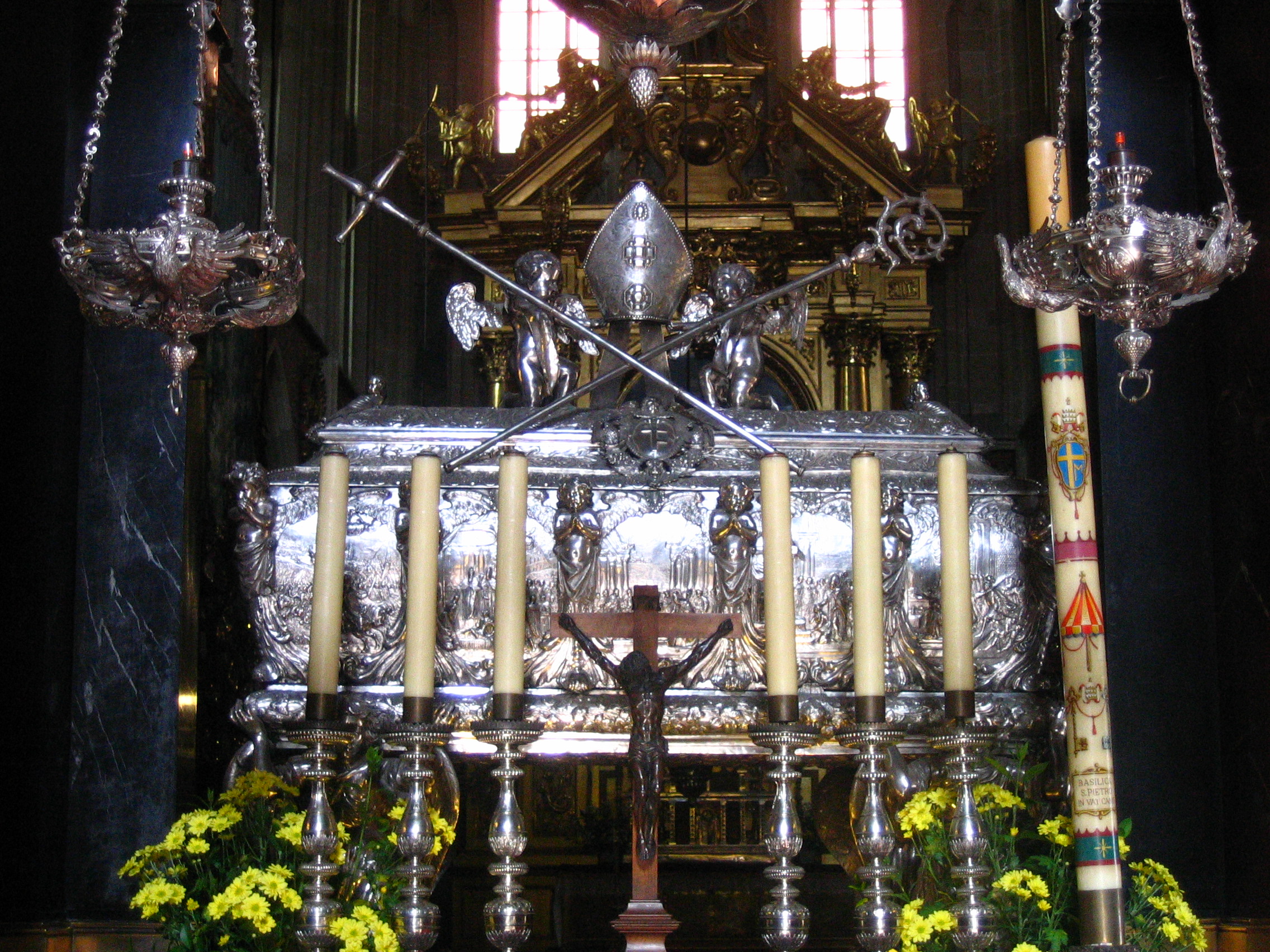
Silver sarcophagus of St. Stanislaus in the Wawel Cathedral
St. Stanislau and his myth – Krakow, Wavel Cathedral
St. Stanislau and his myth – Krakow, Wavel Cathedral Fact of the Polish figure „Polish national myths – Gniezno Cathedral”…
-
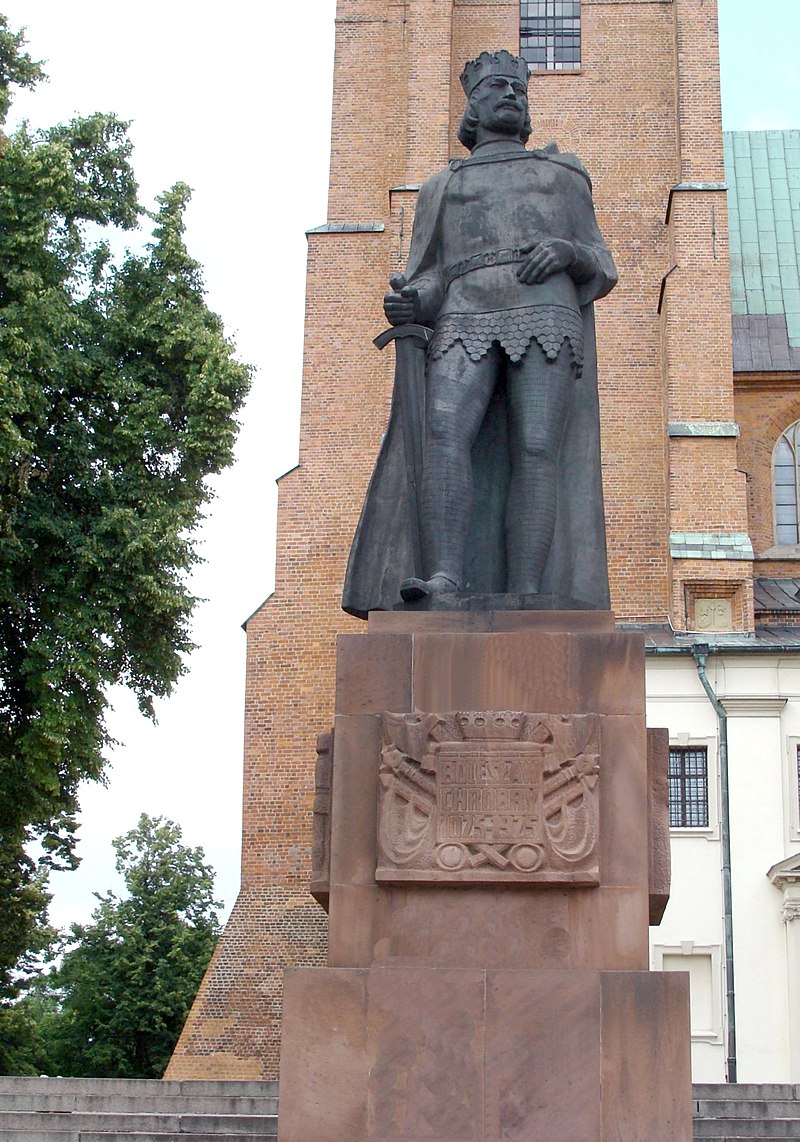
The monument to Boleslaw the Brave in Gniezno
Gniezno city – Gniezno
Gniezno city – Gniezno Fact of the Polish figure „Polish national myths – Gniezno Cathedral” Part of the „The story of…
-
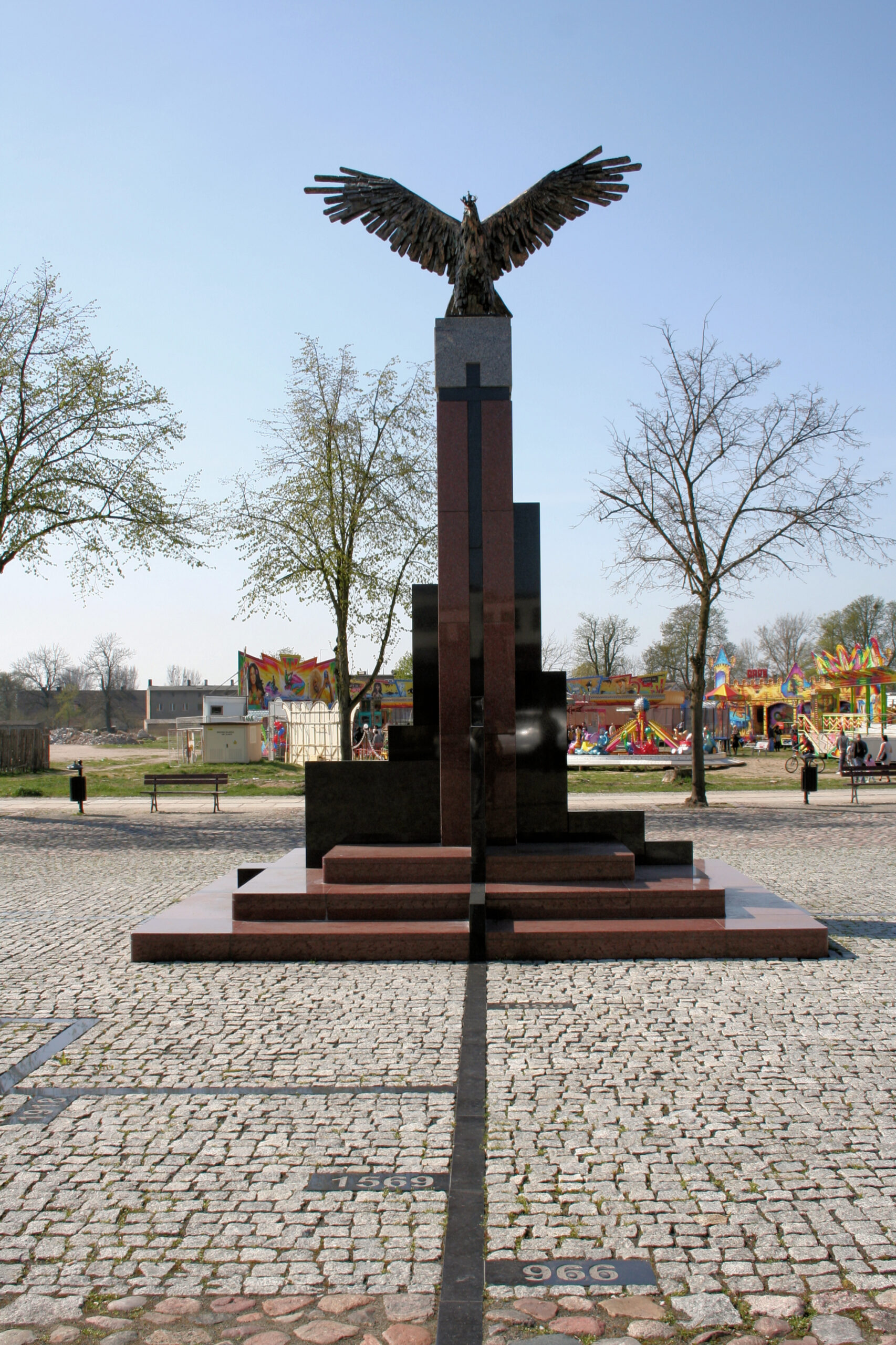
Monument to the White Eagle in Dębno
Legend of the White Eagle – Dębno
Legend of the White Eagle – Dębno Fact of the Polish figure „Polish national myths – Gniezno Cathedral” Part of…
-
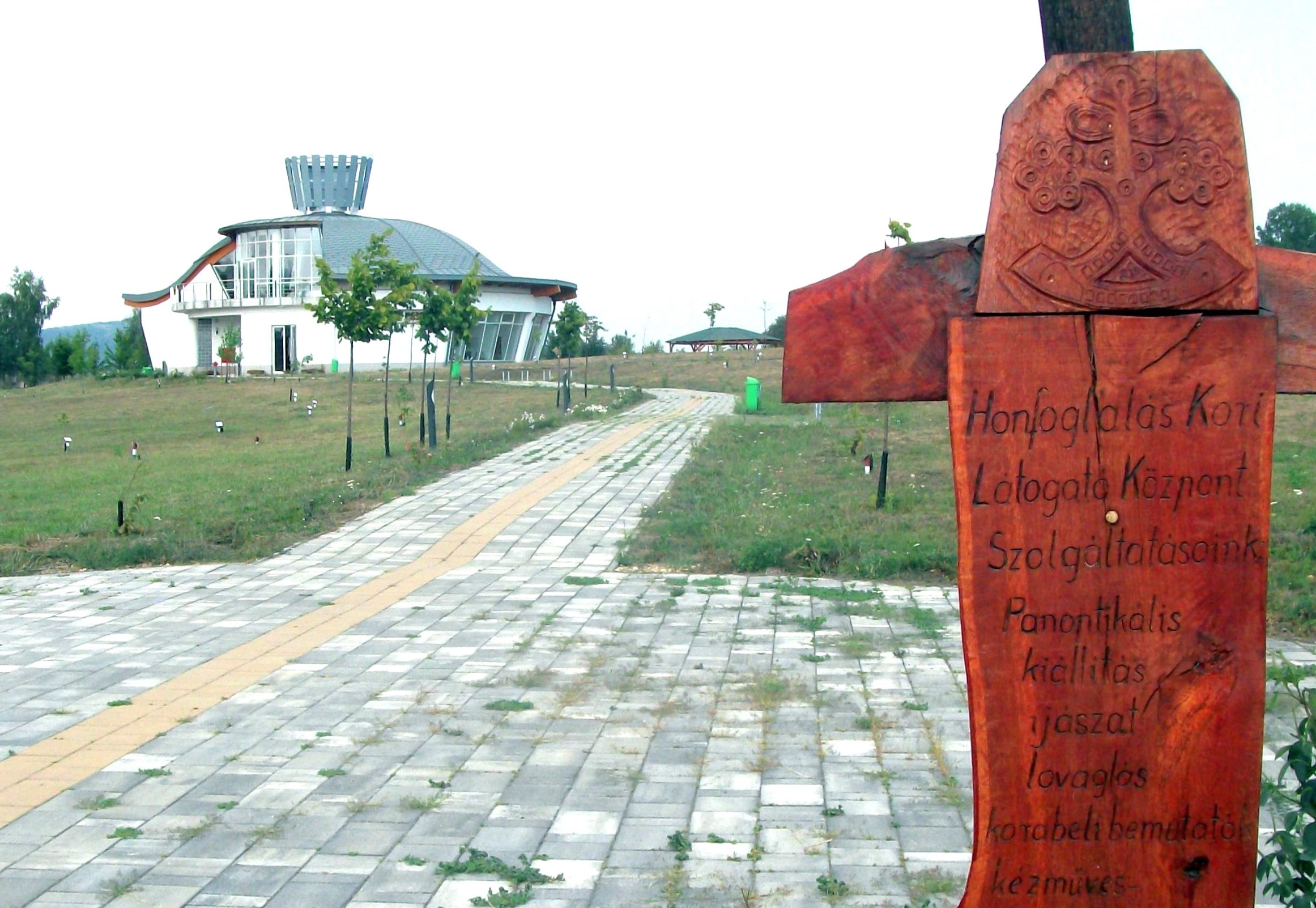
The Karos Visitor Centre of the Age of Land-taking (Honfoglalás Kori Látogatóközpont) in Karos, Hungary, offers an immersive exploration of the early Hungarian conquest period. Opened near the archaeological sites where 10th-century princely cemeteries were excavated, the centre combines exhibition spaces with experiential programs such as archery, horseback riding, and historical craft demonstrations. Architecturally inspired by ancient Hungarian motifs, it serves as both a memorial and an educational space, reinforcing the cultural memory of the Árpád dynasty’s early power base in the Upper Tisza region.
First centre of the Arpads – Upper-Tisza Region
First centre of the Arpads – Upper-Tisza Region (Karos Visitor Centre of the Age of Land-taking) Fact of the Hungarian…
-
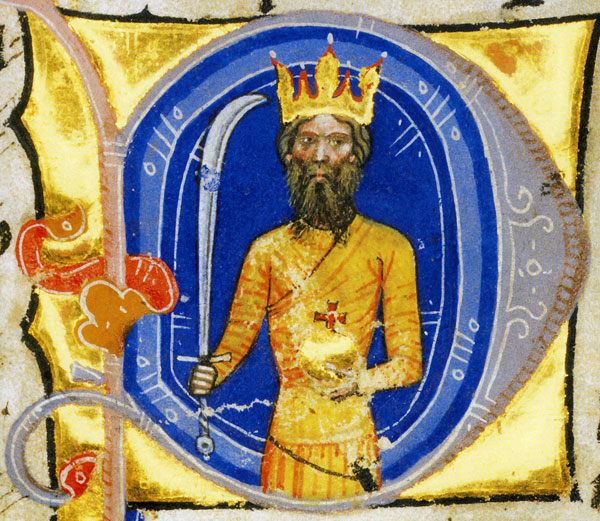
Attila the Hun is depicted in the 14th-century Illuminated Chronicle (Chronicon Pictum), wearing a royal crown and holding a sword and orb as symbols of his power and authority. In medieval Hungarian historiography, especially during the 13th and 14th centuries, Attila was reimagined as a predecessor of the Hungarian kings and an integral part of Hungary’s national mythology. His image in the Illuminated Chronicle reflects this tradition, blending historical memory and legend to emphasize Hungary’s ancient roots and royal continuity.
Mythical centre of Attila – Óbuda (Sicambria)
Mythical centre of Attila – Óbuda (Sicambria) Fact of the Hungarian figure „Myth of the Hungarian land-taking – Ópusztaszer” Part of…
-
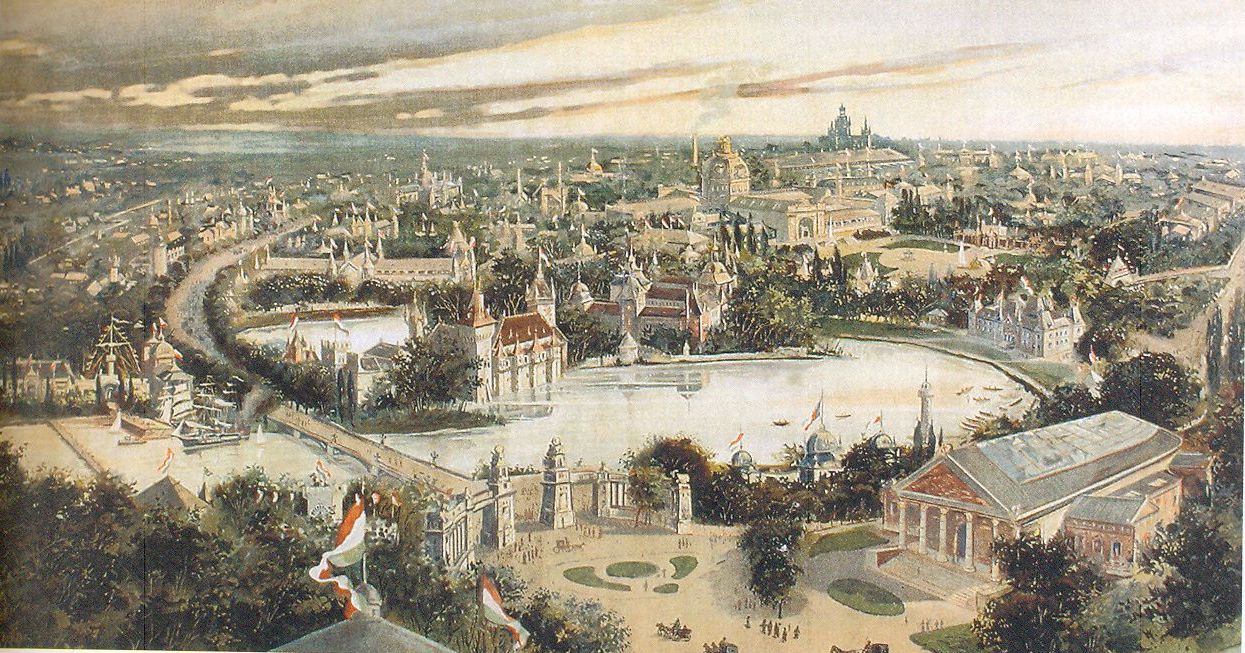
The 1896 Millennial Exhibition in Budapest. This panoramic view captures the grand Millennial Exhibition held in Budapest’s City Park to celebrate the 1000th anniversary of the Hungarian conquest of the Carpathian Basin. Iconic structures like Vajdahunyad Castle and Heroes’ Square, along with cultural and technological displays, showcased Hungary’s past, present, and future.
1896 Millennial Exhibition – Budapest
1896 Millennial Exhibition – Budapest – Heroes Square Fact of the Hungarian figure „Myth of the Hungarian land-taking – Ópusztaszer” Part…
-
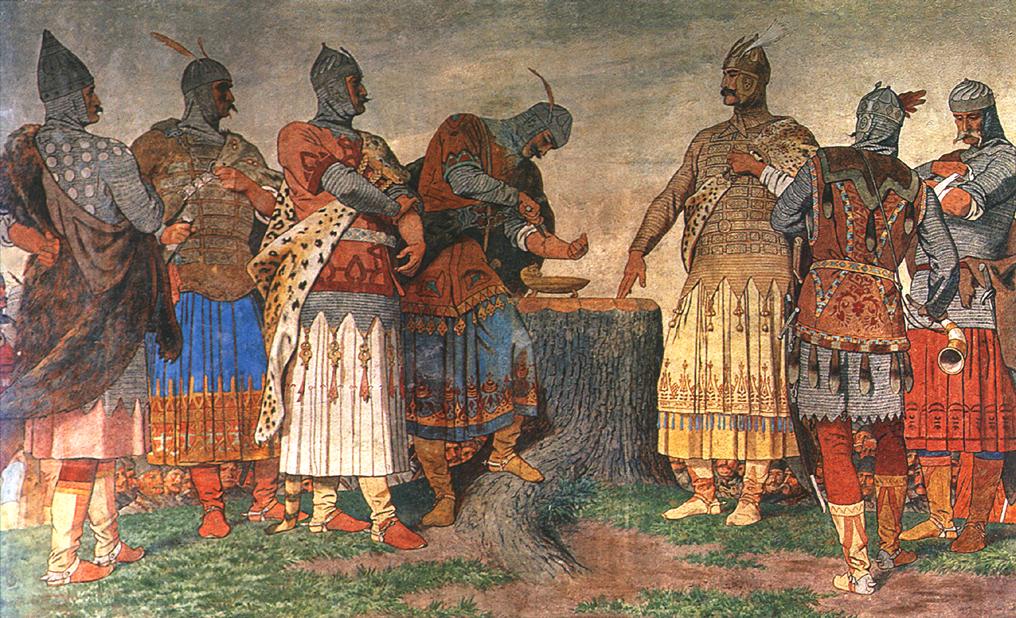
The Blood Oath, authored by Bertalan Székely, is a fresco that was created between 1895 and 1897 for the ceremonial hall of Kecskemét’s City Hall. This artwork illustrates the legendary blood oath taken by the seven Hungarian chieftains. The ritual is represented by the bull’s head bowl, which is inspired by the Nagyszentmiklós Treasure, symbolizing the foundation of the Hungarian tribal alliance.
Legend of the Blood Contract – Kecskemét
Legend of the Blood Contract – Kecskemét – Blood Contract painting in the Town Hall by Bertalan Székely Fact of…
-
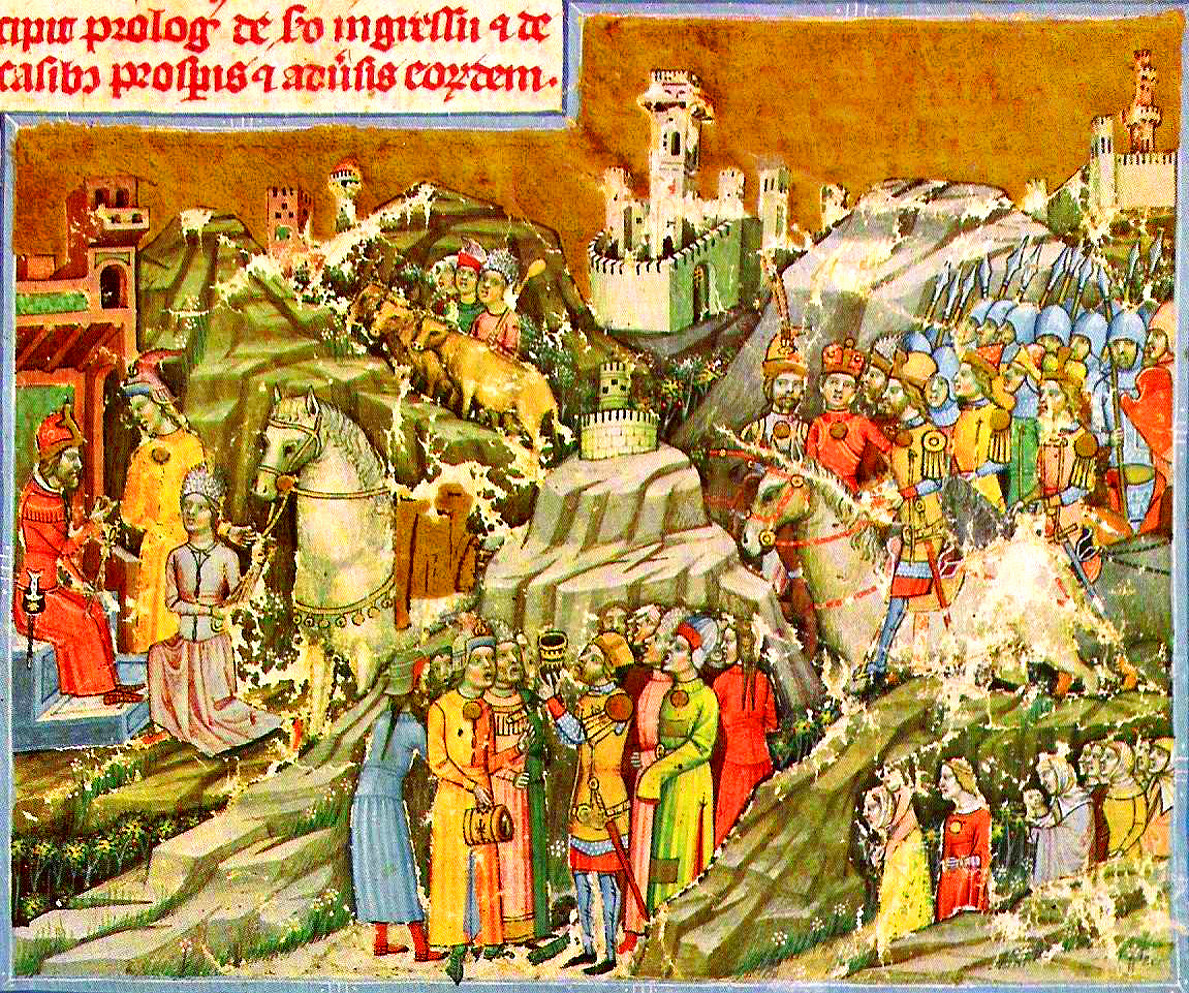
The White Horse Legend in the Illuminated Chronicle. Hungarian envoys offer a white horse to Prince Svatopluk in exchange for land, symbolizing the legal and ritual foundations of the Hungarian land-taking narrative.
Legend of the white horse – Zalavár (Mosapurc)
Legend of the white horse – Zalavár (Mosapurc) Fact of the Hungarian figure „Myth of the Hungarian land-taking – Ópusztaszer” Part…
-
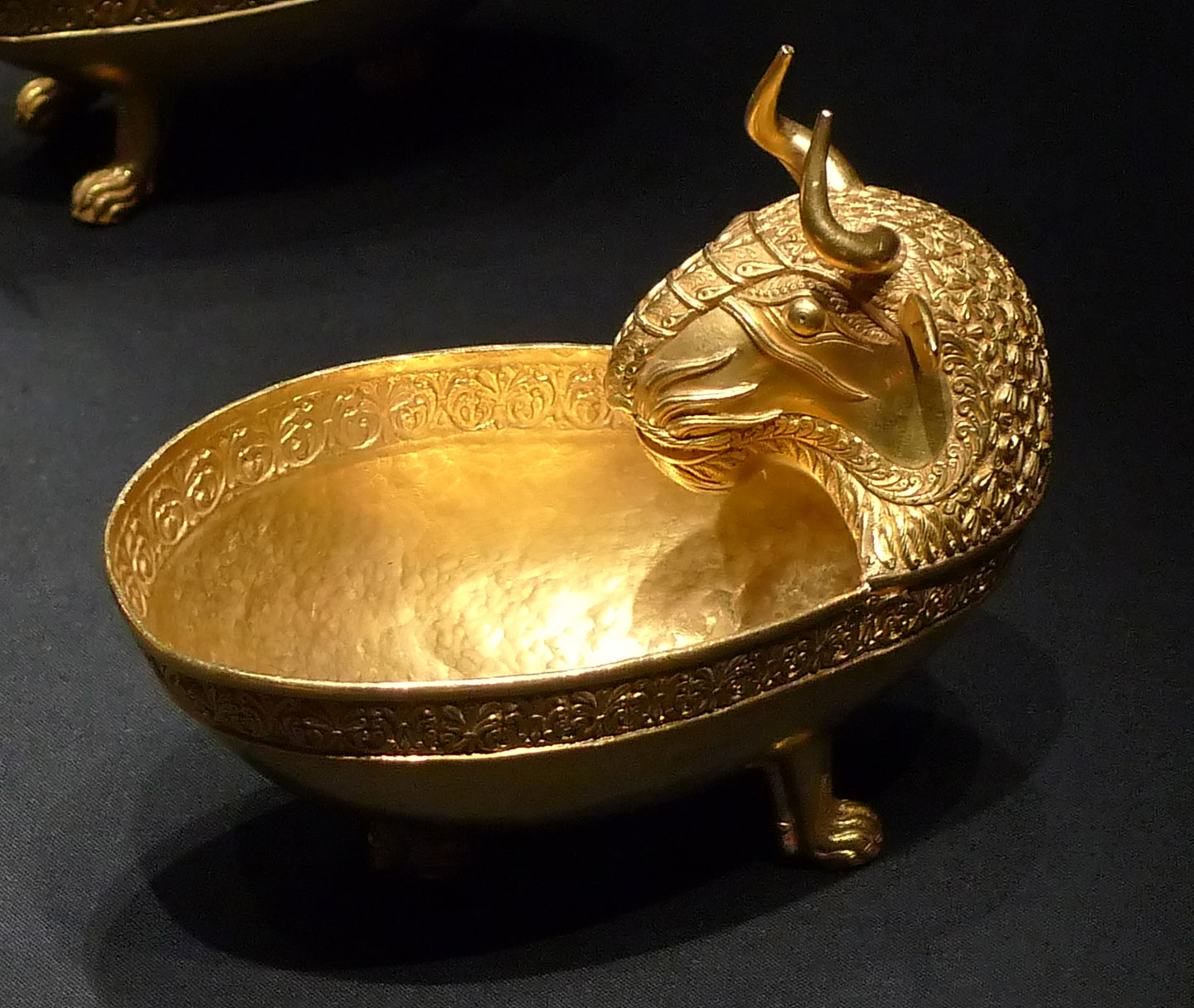
The Nagyszentmiklós Treasure, a collection of 23 elaborately decorated gold vessels discovered in 1799 in present-day Sânnicolau Mare (Romania), stands as a key archaeological find illuminating the early history of the Carpathian Basin and inspiring theories like Gyula László’s „Double Land-Taking” hypothesis.
The theory of double land-taking – Sânnicolau Mare (Nagyszentmiklós)
The theory of double land-taking – Sânnicolau Mare (Nagyszentmiklós) Fact of the Hungarian figure „Myth of the Hungarian land-taking – Ópusztaszer”…
-
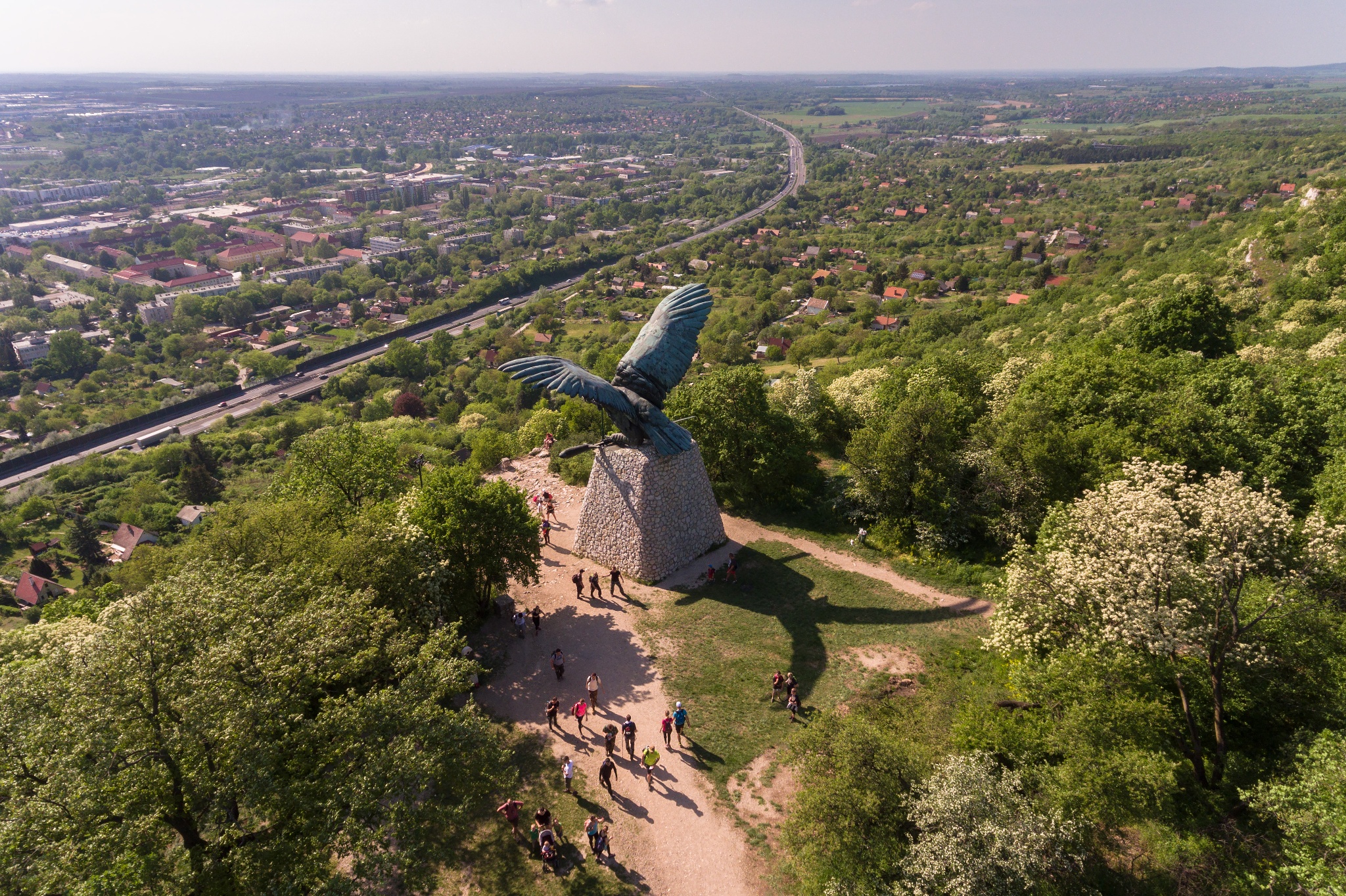
The Turul Monument in Tatabánya, erected in 1907 atop Kő-hegy to commemorate the Battle of Bánhida (907 – By chronicle Árpád, the second Grand Prince of the Magyars, destroyed the army of Szvatopluk here), depicts the mythic Turul bird protecting the city, symbolizing Hungarian heritage and standing today as a prominent landmark and tourist attraction.
Legend of the Turul – Tatabánya
Legend of the Turul – Tatabánya – Turul Monument Fact of the Hungarian figure „Myth of the Hungarian land-taking – Ópusztaszer”…
